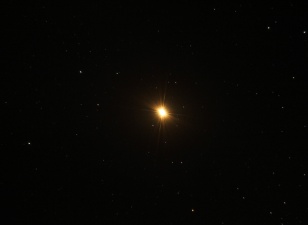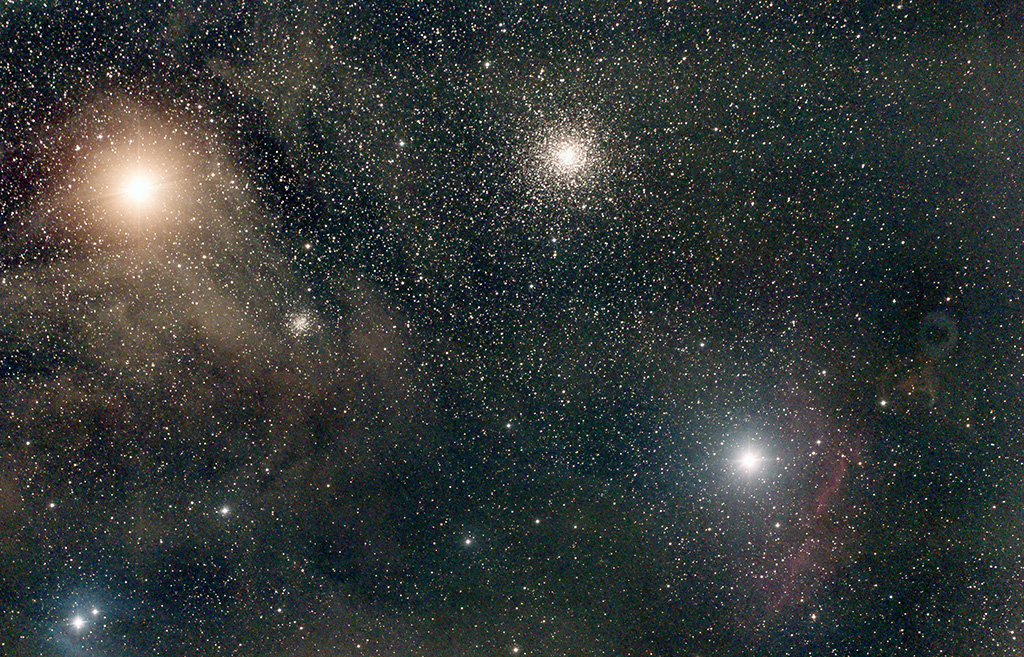

The Next Supernova is Signaling Us, But We Can't See
The last supernova visible in our galaxy was Kepler's supernova in 1604. On average, there should be about two supernovas a century in the Milky Way. So we are overdue. Actually there have been at least two supernovas in the Milky Way since Kepler's star, but neither was observed at the time. A supernova in about 1680 left the bright radio source and supernova remnant Cassiopeia A. And SN G1.9+03 was discovered in 1985 as a remnant, but must have exploded in about 1868. Both supernovas were obscured by interstellar dust.
Today a supernova in our galaxy would trigger an early alert system; perhaps several hours before any light reached Earth. SN1987A produced a neutrino flash that triggered more than 10 neutrino detections at one neutrino observatory. SN1987A was 168,000 light years away. If Betelgeuse were to go supernova, at a distance of 640 light years, we would expect significantly more neutrino detections. Betelgeuse is 262 times closer, and applying the inverse square law, the neutrino flash would have 69,000 times the intensity. There might 690,000 neutrinos detected instead of 10. Another star that might soon go supernova is 119 Tauri (less than 3° from the Crab Nebula) at 1900 light years. Its neutrino flux would be 10% of a Betelgeuse supernova. The neutrinos from a supernova would arrive hours ahead of first light. Thus an anomalous event would alert astronomers to a supernova in time to have telescopes pointed at the object when the shock wave first breaks through the surface of the star. Furthermore, the number of neutrinos detected would hold clues as to the doomed star's distance.
 |
 |
 |
||
| Betelgeuse | μ Cephi (Garnet Star) | Antares |
But which stars are likely to go supernova soon? Typically we think of type II supernova progenitors as being red super-giants. So the first stars that come to mind are Betelgeuse, Antares, Mu Cephei, 119 Tauri, VY Canis Majoris, or NML Cygni. But SN1987A's progenitor wasn't a red super-giant, but rather a luminous blue variable star. In addition, Blue super-giants have been known to go supernova and Wolf-Rayett stars are suspected of occasionally being supernova progenitors. It might even be possible for yellow super-giants to go supernova.
| Star | Classification | Mass | Distance | App. Mag. |
|---|---|---|---|---|
| Betelguese | M2Iab | ~14 M-solar | 640 ly | 0.45 |
| Antares | M1Iab | 12 M-solar | 600 ly | 1.05 |
| μ Cephei | M2Ia | 19 M-solar | 2400 ly | 4.20 |
| 119 Tauri | M2Iab | 14 M-solar | 1900 ly | 4.30 |
| VY Canis Majoris | M5Ia | 17 M-solar | 3,800 ly | 6.5 |
| NML Cygni | M6I | ~32 M-solar | 5,000 ly | 16.60 |
| P Cygni | B1Ia | 30 M-solar | 6,000 ly | 4.8 |
| Rigel | B8Ia | 18 M-solar | 860 ly | 0.12 |
| η Carina | LBV | 120 M-solar | 7,500 ly | 4.6 |
| γ Velorum | WC8 | 9 M-solar | 800 ly | 1.78 |
| ρ Cassiopeia | G2Ia | 22 M-solar | 12,000 ly | 5.0 |
The reason type II supernovas might arise from such different stars is that their extreme mass allows the core processes to be somewhat disconnected from the outer shell processes. When we look at Betelgeuse, for example, we have no idea what's burning in the core, except to say that is done burning hydrogen as it is no longer on the main sequence. It could still be burning helium and have a million years left before exploding. It could be burning Neon, Oxygen, or Silicon, in which case we will get to see it explode in our lifetimes. You will recall that type II progenitors have multiple shells of fusion cycles occurring in the core. So the intensity and volume of the outer core hydrogen burning shell has more to do with the star expanding to a red super-giant, or contracting to a blue super-giant than the exact process occurring at the heart of the star.
| Fuel | Product | Temperature | Burn Time |
|---|---|---|---|
| Hydrogen | Helium | 70 million K | 10 million years |
| Helium | Carbon | 200 million K | 1 million years |
| Carbon | Neon | 800 million K | 1,000 years |
| Neon | Oxygen | 1.6 billion K | ~5 years |
| Oxygen | Silicon | 1.8 billion K | ~5 months |
| Silicon | Nickel | 2.5 billion K | ~1 day |
If we could see the core of these stars, then we would know when they are set to explode. Seeing the cores is impossible using light, but neutrinos race out of the core and reach us without being much affected by the rest of the star. The individual nuclear reactions produce neutrinos with specific energy levels, and the number of neutrinos produced by each burning phase varies dramatically. Consider that the carbon burning phase proceeds 10,000 times more quickly than the hydrogen burning phase. And the oxygen phase runs 20 million times faster than the hydrogen burning phase. It stands to reason that the oxygen burning phase would produce neutrinos on the order of 20 million times the hydrogen burning phase rate. If only we could detect these neutrinos.
But, alas we are a long ways from being able to detect neutrinos from even nearby stars. Our current detectors record about one interaction a day from the sun's core nuclear reactions, out of the 65 billion that flow through each square centimeter per second here on Earth. Let's put Betelgeuse in place of α Centauri and assume it is in the oxygen burning phase. Let's also multiply the neutrino rate by 1,000 to account for the fact that the entire lifetime of Betelgeuse is one thousandth of the sun's. And let's multiply by 14 to account for it's greater current mass. So we'll assign Betelgeuse a neutrino production rate of 280 billion times that of the sun. α Centauri is 25.67 trillion miles away and the sun is 93 million miles away, so α Centauri is 276,000 times farther than the sun. From the inverse square law we deduce that the luminosity is reduced by a factor of 76 billion. So the neutrino detection rate would be three a day. However, Betelgeuse is actually 148 times farther than α Centauri and its neutrino luminosity is one twenty thousandth as intense, given our assumptions. So, at best, we would detect a neutrino from Betelgeuse once every 20 years after it reaches the oxygen burning phase (the phase only lasts 5 months), or once every 40,000 years in the carbon burning phase (which lasts 1000 years).
It would be wonderful if neutrino detector sensitivity could be increased by a factor of 100,000 or a million. But that isn't going to happen any time soon.